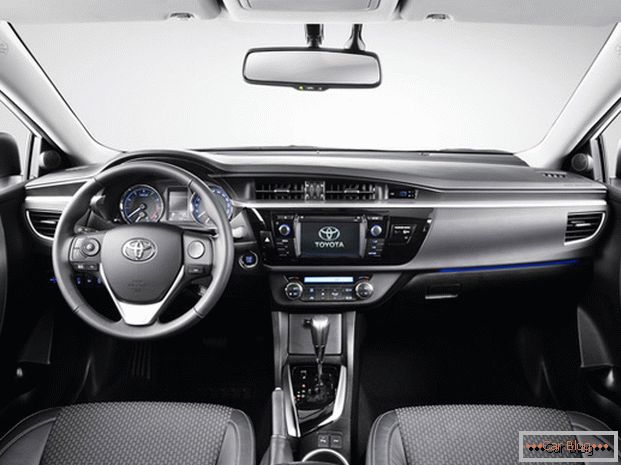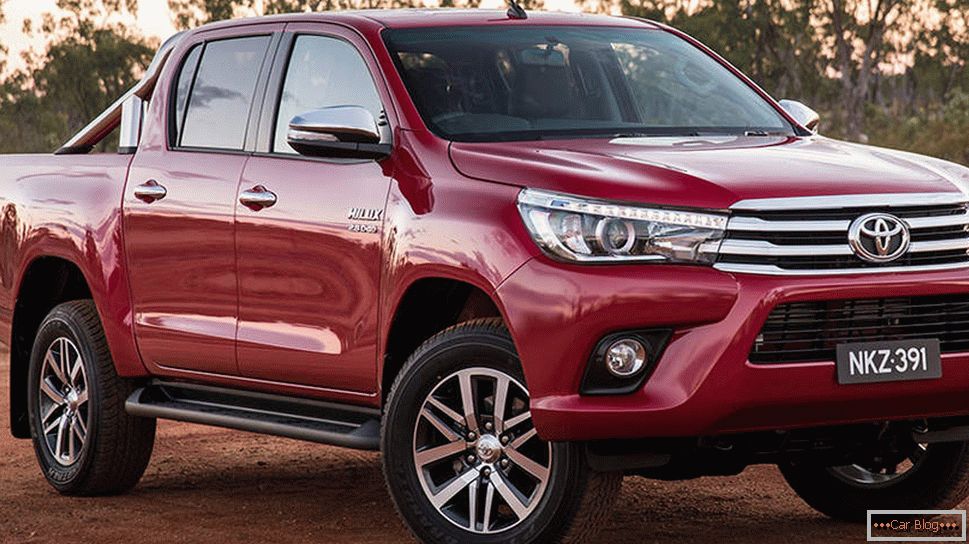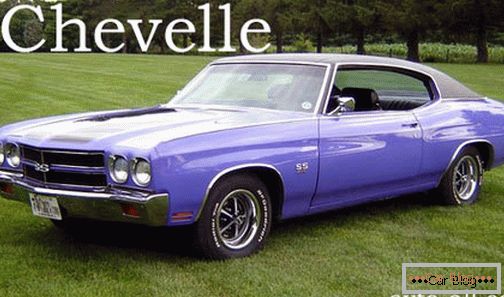>
Vehicle suspension plays an essential role in ensuring comfort and safety during vehicle operation. Because for each car owner it is important that the design of this site consisted of high-quality materials and reliable components. On domestic roads, this issue is particularly relevant, since the quality of coverage in many regions and cities leaves much to be desired. Because of it, the suspension elements of the machine are under serious load, the result of which is often a node failure. Because manufacturers began to develop new solutions that can improve the reliability and extend the service life of the suspension when operating the machine in difficult conditions. The result of the work was the appearance on the market of polyurethane silent blocks, which offered to replace the standard rubber products for the undercarriage. Motorists had a logical question as to which of the silent blocks are better and what should be installed on their car. To find an objective answer, you need to understand the device itself and the principle of operation of silent blocks, as well as to examine the strengths and weaknesses of the two materials.
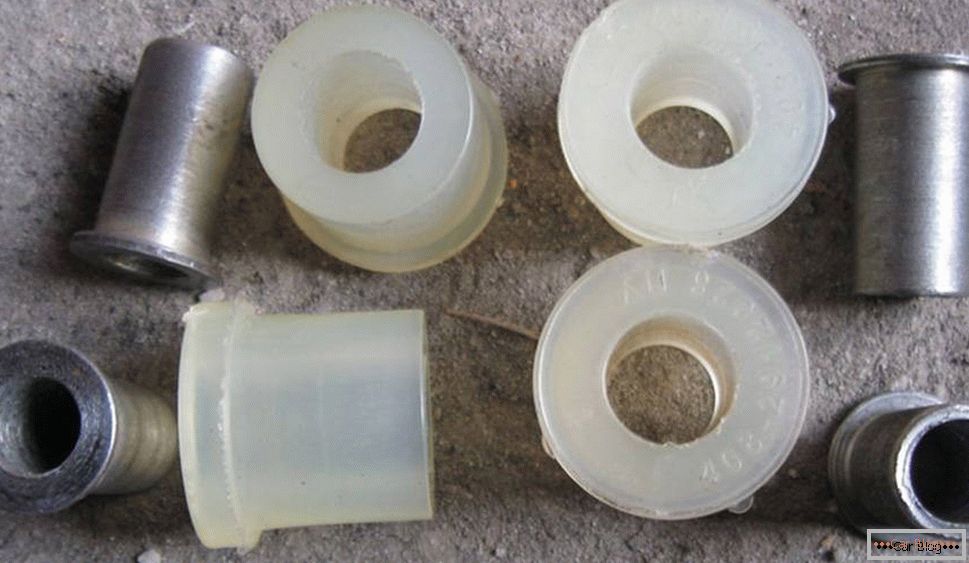
How to choose the silent blocks: rubber or polyurethane.
Читать далее про то какие сайлентблоки лучше: резиновые или полиуретановые-->
Features silent blocks and how they work
The silent block, regardless of the use of rubber or polyurethane (PU), is an element of the suspension, which is a hinge. It consists of 3 elements:
- inner steel sleeve having thick walls;
- metal outer sheath;
- the space between them, which is filled with elastic materials.
This hinge is often called dry. This designation is due to the fact that it does not use grease. The front, and in some cases, the rear wheels of the car are mounted to the body on the principle of a stand - a lever. To dampen vibrations caused by uneven roads, the lever rotates along its axis. This is made possible by silent blocks. The outer shell of these elements is pressed into the lever, and the inner sleeve is mounted on the axis. From both sides it is clamped with nuts. This allows you to firmly fix the metal component of the hinge and prevent it from turning while the vehicle is moving.
This principle of fixation allows the node to simultaneously perform two functions:
- The main task. Hobs provide the lever with axial movement without friction in the absence of lubrication. This is the basic principle of the elements, since the outer and inner sleeves can rotate relative to each other, using only the elasticity of the material that is located between them.
- Secondary task. It consists in softening and repelling the minor blows that fall on the suspension. This does not allow the force of impact to be transmitted to the steering wheel. Here the elastomer plays a significant role, that is, the material filling the space between the inner and outer sleeve.
Now the middle part of the hinge is made of rubber and polyurethane. Rubber is based on synthetic rubber. When rubber is used, it is welded to the bushings by vulcanization. And polyurethane products are pressed and fixed between metal shells, so that they do not rotate.
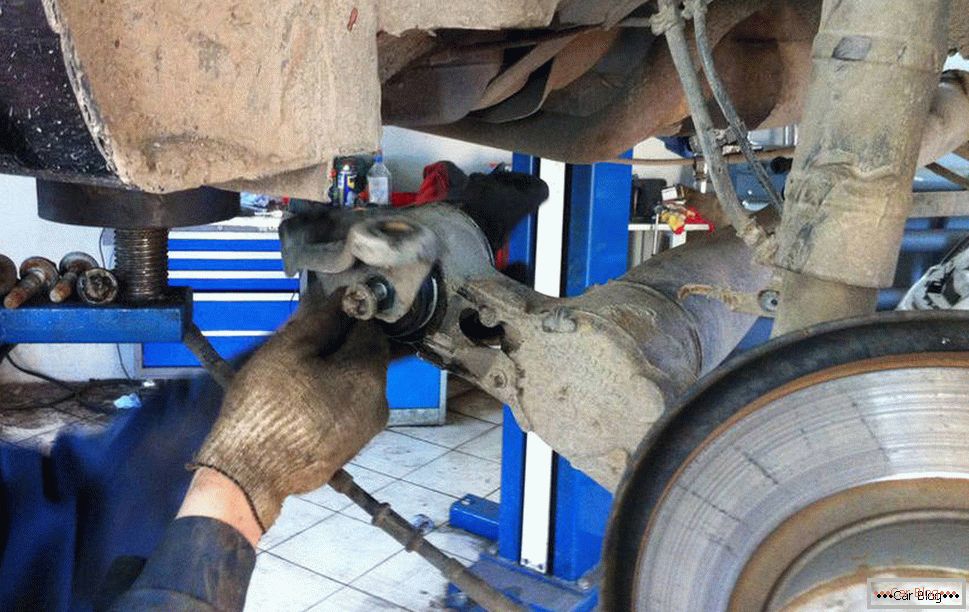
Basically silent blocks fail for several reasons:
- normal wear and tear;
- low quality products;
- aggressive driving;
- weather factor exposure;
- mismatch of the silent blocks of the car suspension design;
- wrong installation.
All this leads to the fact that the car owner is required to change the elements. To do this, choose between rubber and polyurethane options, comparing their strengths and weaknesses.
Advantages and disadvantages
To determine which of the silent blocks are better - rubber or polyurethane, you should carefully examine the strengths and weaknesses of the two options. On the positive qualities of rubber, which is used in the production of silent blocks, has long been known. The main advantages are called elasticity and the ability to provide a good amplitude of oscillations for the levers. This contributes to the lengthening of the suspension of the car. This advantage was especially appreciated by the owners of off-road vehicles, whose wheels are subjected to increased loads, and they have to hang out more to overcome various difficult areas.
Also rubber-metal Silent soft enough. This feature allows you to protect the body from the effects of vibrations and small strokes. As a result, the driver and passengers get such an important comfort. Those who set themselves rubber silent blocks know that they are also better in such a component as cost. If you choose which products are preferable to purely their price criteria, the undisputed leader here will be rubber.
But, in addition to objective advantages, together with them you will encounter significant shortcomings. Namely:
- gradually as the rubber dries, it cracks and collapses;
- significantly reduce the service life of rubber products can contact with various petroleum products and chemical reagents (riding in winter on roads that are sprinkled with special compounds to combat ice and snow);
- Silent elements become softer when worn out, the car behaves unstably, and may deviate from a straight-line movement.
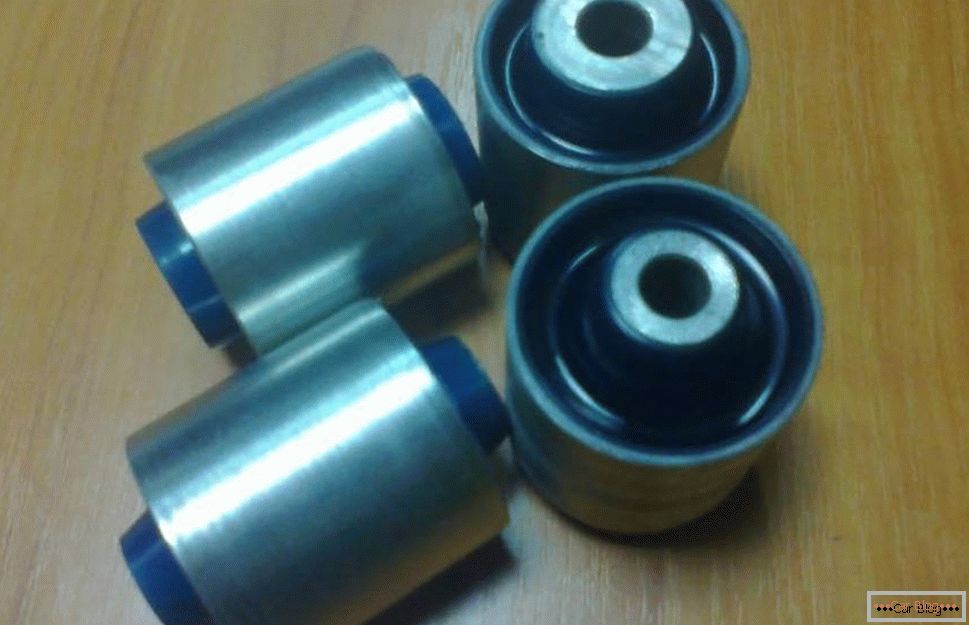
Now, about how good the polyurethane from which silent blocks are made. We will try to find out what is best. Polyurethane is more modern development than rubber. This is an artificial polymer material that is not afraid of:
- moisture;
- alkalis;
- oils;
- petroleum products;
- chemicals and reagents.
During the entire operating period, the polyurethane silent blocks installed on the vehicle's suspension do not change their moisture indicators. This opens up such an important advantage as the absence of the drying effect that is relevant for rubber elements. In terms of hardness, polyurethane exceeds rubber. Due to this, Silent receive a higher stiffness, while improving vehicle handling.
Although PU silent blocks are not as perfect. Here, too, there are objective shortcomings that consumers should pay special attention to:
- If there are minor irregularities on the roadway, the driver will feel them more strongly on the steering wheel. Nevertheless, the rubber acts softer and more effectively extinguishes these blows.
- Vibrations from a rough road transfer the load on the elements of a car body. This causes their premature wear and shortened service life.
- Polyurethane cannot provide a long stroke for a car suspension, which is explained by a lower indicator of material elasticity in comparison with rubber analogues.
- If the ambient temperature drops below -20 degrees Celsius, polyurethane opens its weak point. This material begins to tan, which leads to the appearance of cracks and further destruction under the action of natural loads.
As motorists themselves say, there have been cases when, under the influence of severe frost, polyurethane-based silent blocks rotated. The inserts could not withstand such a thermal load, because of which they were turned inside the metal sleeves. The result of this phenomenon was a strong creak. But still the main drawback characteristic of polyurethane is the cost of such silent blocks. If you look at the offers of the market, it can be revealed that products made of PU are usually several times more expensive than analogues of rubber that is familiar to most of us. Interesting is the fact that the main distribution of polyurethane bushings, implemented in the form of spare parts for cars, received only in Russia and CIS countries. In the production of new cars in our country and abroad, they continue to be equipped from the factory with rubber-metal types of hinges. Therefore, polyurethane analogues, although considered to be a more modern development, in fact, they are not widely used.
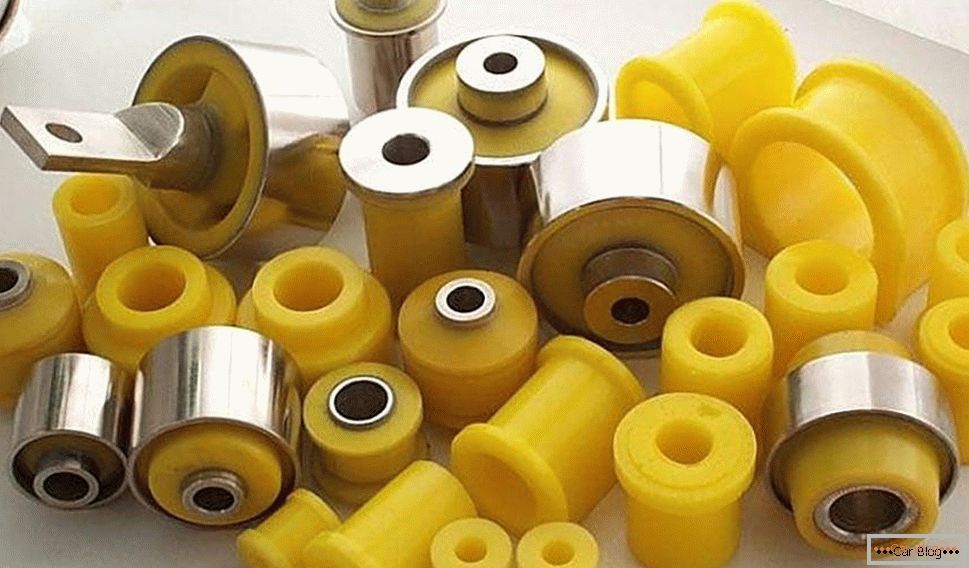
 Discounts for new cars! Profitable loan from 9.9% installments 0%
Discounts for new cars! Profitable loan from 9.9% installments 0%  adom.ru
adom.ru
What to choose
Now polyurethane silent blocks are positioned as a modern and high-tech development. But before you install a particular silent block, you should learn about some features and warnings about their use. Which option is best for you depends on the situation. Therefore try to make a start from individual features of operation of the car and the vehicle itself. Experts note that the rubber hinge can be used and used on machines of any class and under a wide variety of operating conditions. If you have some doubts about the choice, listen to the following tips.
- Polyurethane-based elastomer shows itself well in work on cars that have a short suspension travel. To unleash the full potential of the material, it is recommended to operate the machine in the conditions of the city and on flat roads.
- If you live in the northern region where the cold winter prevails with strong temperature drops, the rubber silent block will be the best solution. Under such circumstances, the polyurethane analog will quickly lose its performance and lead to damage to the suspension of your car. It copes better with frosts, although it will be necessary to change silent blocks more often.
- On cars that are characterized by a large suspension travel, polyurethane products will not fully cope with their tasks. This is especially true for conditions with bad roads. Therefore, owners of crossovers and SUVs are advised to opt for traditional rubber-metal constructions. Otherwise, when installing products made of PU, the elasticity of this material is not enough to turn the levers. As a result, the insert will start to turn on the sleeve and a strong creak will appear.
- Fakes. Another common problem of choice is a large number of fakes, which are sold under the guise of high-quality products from well-known manufacturers. Therefore, try to buy Silent only from trusted and certified vendors.
With proper choice of sleeves can serve for a long time, efficiently and reliably, delivering a minimum of problems to the suspension and providing a comfortable ride on your car.
What critics say
It is important to understand that not always the words of the manufacturer correspond to reality. Therefore, it is not worth relying entirely on promises in advertising or believing the official representatives of various manufacturers of silent blocks. Since polyurethane is more expensive than rubber, manufacturers of the first products are trying in every way to raise interest in their products, put it in the best light and show superiority over rubber-metal competitors. But car owners themselves admit that the appearance of silentblocks on the PU market did not become an outstanding breakthrough. Often they are criticized and discussed in detail. And there are several objective reasons.
- Artificial material, which is polyurethane, has excellent strength properties. This manufacturers are called one of the main advantages of products. But at the same time increased hardness reveals an important drawback. Because of her suspension becomes much tougher.
- Polyurethane does not give the car the same softness as rubber-metal hinges. Because the driver and passengers will feel all the bumps and irregularities that overcomes the vehicle. Because of this, drivers who are accustomed to ride gently and comfortably, when moving to PU, the hinges quickly change their mind, returning to traditional rubber-metal products. But some successfully get used to changing the behavior of the suspension. So here is not so simple.
- PU shows excellent performance in compression and tension. But in twisting this material is significantly inferior to the competitor. Due to twisting, the process of material destruction is significantly accelerated. But for the chassis of the car these types of loads are not uncommon.
- The eternal question of value. If the driver is used to saving and counting literally every ruble spent on the maintenance and servicing of his car, he obviously will not like the price tags for polyurethane silent blocks. The cost is sometimes 4-5 times different. However, you do not get the confidence that such a spare will last much longer and more efficiently. Therefore, an economical motorist decides to take a PU hinge unless, perhaps, due to a competent advertising campaign policy, or purely for the sake of experiment.
If we are talking about a flat expensive, temperate climate and cars, then here there are no complaints about polyurethane as a component of the silent block. The material behaves well, shows its best properties and characteristics. But in more relevant conditions for Russia and the CIS countries, where there are severe frosts in certain regions, only the name remains on some sections of the roads, you will not find anything better than rubber. Therefore, with an eye on our operating conditions, rubber-metal products have an objectively large number of advantages. But in some situations, the higher cost of polyurethane analogues can justify itself. Therefore, it should be chosen on the basis of a specific situation.

